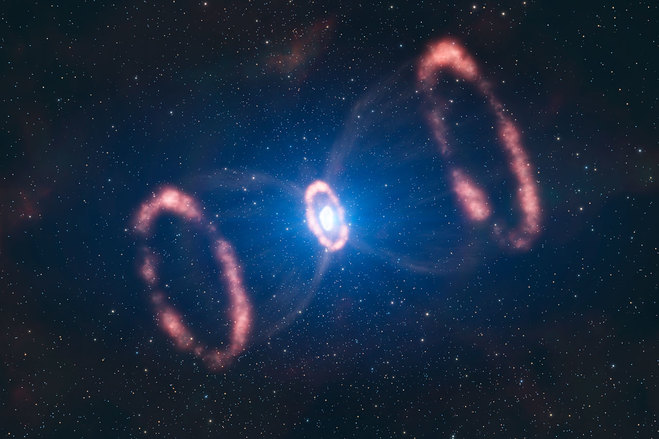ASTONOMERS HAVE, for the very first time, obtained a three dimensional view of an exploding star.
Scientists at the European Southern Observatory (ESO) used the aptly-named Very Large Telescope to make a 3D map of the distribution of the innermost material thrown out by a recently exploded star, positioned 165,000 light-years away from Earth.
The star is known as Supernova 1987A.
The results of new research show that the star was extremely turbulent and the eventual blast intensely powerful – unlike, scientists say, the Earth’s sun.
When our sun dies, it is expected to do so with a (relative) lack of fanfare.
Supernova 1987A exploded in 1987, and the was first in nearly four centuries that was possible to be observed with the naked-eye due to its relative closeness.
The position of Supernova 1987A has also made it possible for astronomers to study the aftermath of such an explosion in greater detail than ever before, making it a truly exciting event for astronomers.
The study shows that instead of exploding in all directions, the supernova had a preferred direction.


